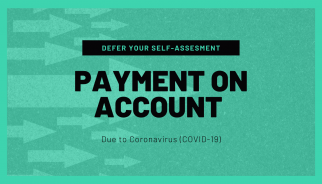Working from home relief = FREE CASH Due to the current pandemic, many businesses have been working from home this…
The global pandemic has hit everyone hard, the knock-on effects of which will be ongoing for the years to come….
How many times are you distracted during an average workday? Once, five times, ten times? Now, multiple this by 25….
During this global pandemic approximately 7.5 million employees have been furloughed (more than 1 in 5 of the UK’s workforce)…
How to say “no” nicely (and not damage business relationships in the process) One of the most important things you…

Ask HMRC to verify you had a new child which affected your eligibility for the self-employed income support scheme. If…

Choose how and when you can delay making your second payment on account for the 2019 to 2020 tax year….

Sole Traders to get second grant from the Government. The government’s Self-Employment Income Support Scheme will be extended, giving more…

The portal opens this week to claim your grant is you are self-employed. This is capped as a taxable lump…

The help and advice that is available from the Government is forever changing. This is the latest update we have…



